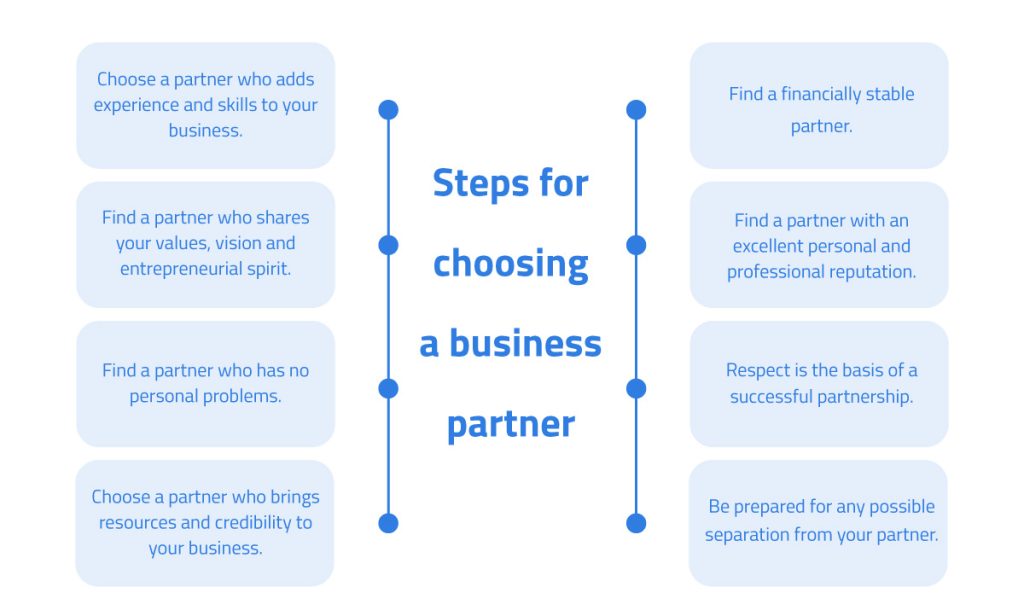
Start-ups find it difficult to strengthen their presence in the market with the intense competition; Because of weak capital and lack of expertise and preparations, which shows the concept of partnership as a practical solution that increases opportunities for expansion and growth, and creates new prospects that may not exist without it.
The need to understand this term has increased with it. Therefore, this article is a simple attempt to clarify the concept of partnership by defining it, discussing its types, pros and cons, and identifying some key points that must be taken into account when choosing a partner, as well as citing some examples of successful partnerships.
Partnership concept
A partnership is a commercial activity that takes an official, illegal form between two or more parties to manage and operate it. All responsibilities are allocated and the resulting profits and losses are shared.
The partnership is not legalized and does not require registration with real estate agencies. Instead, it is only a partnership agreement between the parties, which includes the clauses that define the activity, according to which the responsibilities in managing and organizing the activity are distributed.
Do you need a partner?

A partnership is a real addition, especially to self-financing companies. For example, suppose you are starting a business for humanitarian, societal, or environmental goals, or trying to fill a market gap. In that case, the partnership is a great idea, requiring a lot of work, and personal goals are minimal. Therefore the partner is real support for the success.
On the other hand, if your main goal of establishing your business is to make profits in the first place, the idea of partnership is not appropriate, as this type of company is small, its goals are personal, and one person can assume his responsibilities. So before starting any activity, develop a business plan. It helps you understand the nature of your business, what you are trying to do, and what you are striving to achieve, which makes it better to determine whether you need a partner.
Why choose to partner in your business

Partnership with one or more other parties provides a greater opportunity to reach more comprehensive expertise in various aspects related to your business, and the appropriate partner is the one who completes you. In other words, he possesses the expertise and skills that you lack, so you work together to develop your business.
Cooperation is fundamental in any commercial activity, as it gives the partnership greater flexibility than a business limited to one owner. Of course, it is easier to run your company alone, but the partnership saves you a lot of time and effort.
Types of Partnerships:
Partnerships are divided into four main types:

1- general partnership
It is the primary form of partnership that does not require forming a recognized commercial entity. In most cases, it is done by signing a partnership agreement between parties, and the profits are usually distributed equally or according to their agreement.
In this type of partnership, all parties have independent authority and full responsibility, meaning that each party is personally responsible for all the company’s debts and legal obligations. In addition, this type is easy to create and resolve, as it automatically ends in most cases of the partner’s death or bankruptcy.
For example, a general partnership includes three partners, one of whom borrowed a loan the company cannot cover, so all partners bear the responsibility of this debt personally.
2- limited partnership
This partnership is an official business entity consisting of at least one general partner with full responsibility for the company and one or more limited partners who provide money without any role in managing the company affairs.
The limited partners invest their money in the company for profitable purposes and to obtain profits without being responsible for its debts and legal obligations. They are only allowed to share profits; in case of loss, they only lose the amount in which they participated. If they have a role in management, they forfeit their limited partnership status, including all protection and immunity.
3- Limited liability partnership
This partnership is similar to the general one in that all the partners contribute to the company’s management with limited responsibilities. Still, the partners remain fully responsible for the company’s debts and obligations without being held accountable for each other’s mistakes.
4- limited liability limited partnership
It is a new type of partnership that has appeared in some countries and is similar to the limited partnership pattern with at least one general partner. Still, this type of partnership determines the liability of the general partner, which means that all partners have limited protection.
Steps for choosing a business partner

1- Choose a partner who adds experience and skills to your business.
A good partner is someone who has skills that support your own. No one has all skills required for a business. For example, if you are good at communicating but need to be financially savvy, look for a partner with experience in this field. The more skills you and your partner have, the easier it will be for you to start, manage and develop your business.
2- Find a partner who shares your values, vision and entrepreneurial spirit.
This is the most important thing you must look for in your future partner. To effectively communicate, you must share these matters to make decisions, set goals, and run the company forward.
3- Find a partner who has no personal problems.
If your partner has personal problems, he may transfer them to work with him, which will negatively affect your business. Launching companies and startups requires a lot of focus, time and effort, with a spirit of enthusiasm and patience.
4- Choose a partner who brings resources and credibility to your business.
Choosing a partner with financial strength is essential, but it is not limited to money. Other contributions that add value to your activity are equivalent to money, such as a network of professional relationships, a list of clients, or a good reputation in the field. This adds credibility and reliability to your business and a quick acceptance of your presence in the market.
5- Find a financially stable partner.
It is preferable to choose partner a financially stable partner, whether he contributes in the financial aspect or not. If you don’t, it will harm you and your activity for several reasons; Money, time management, resource management and other skills are essential to entrepreneurship; Any defect in them will affect the owner’s ability to perform his role as required.
6- Find a partner with an excellent personal and professional reputation.
Choose a partner you can trust; otherwise, his presence may cause many problems on a personal and professional level.
7- Respect is the basis of a successful partnership.
The main goal of the partnership is to achieve success in a team spirit, so if you are in a partnership with someone you do not respect, you may not take his opinion and effort seriously on a professional level, which is terrible for your partnership and business.
8- Be prepared for any possible separation from your partner.
Remember that partnership is a legal obligation, and if things go wrong, separation may be the last solution. Therefore, you have to prepare for this moment so that your activity will not be affected by this separation and ensure that all relevant details of the separation process are included so that no unaccounted-for problems occur.
The pros and cons of partnership
Positives:
- Speed in completion.
- Less financial burdens.
- No extra taxes.
- Sharing legal responsibilities and obligations.
- A more extensive base of skills, experience and knowledge.
- Additional capital is used to develop the company.
- Greater chance to borrow from the bank or other parties.
Negatives:
- Lack of independence in making decisions.
- The possibility of disagreements.
- Divide profits.
Practical examples of successful partnerships:
BMW & Louis Chilton
Louis is best known as a French fashion house and luxury goods company, and BMW is a German company that manufactures luxury cars. Combined with good taste and the desire to provide a product of high-level quality, the car company produced luxury sports cars. Louis House designed a group of suitcases suitable for those cars.
Amazon & American Express
Amazon American E-Commerce was founded in 1994, and the second is a payment card service company founded in 1850. Amazon wanted to improve how small and medium businesses sold through it and decided to partner with American Express.
In conclusion, do not hesitate to enter into a partnership if you decide to launch your successful company, as it opens wider access and communication doors. Be sure to choose the right partner who will really help and complement you in his skills and experience. Do you think the partnership is a solution or an obstacle to the startup’s success?